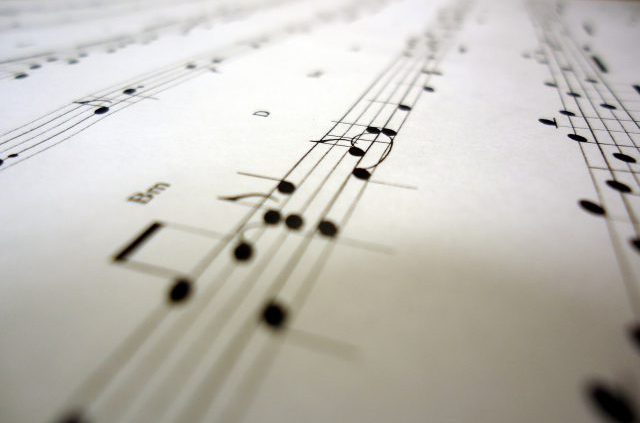AI music composition passed Turing test
Music composition by computers has been of great research interests for long. Many techniques, such as rules, grammars, probabilistic graphical models, neural networks, and evolutionary methods, are applied to automatic music generation. In this article we describe our approach and the corresponding results.
AI music recognition test
Before describing our method, let’s test if you can distinguish AI music from human music. 5 AI tunes and 5 human tunes are gathered and shuffled, and you are encouraged to select 5, which you consider more machine-made, from them. The true composers will be revealed later in this article.
Breaking music into components
To compose a tune using computers, we break the tune into several components and generate each component individually (but dependently). A music work, e.g., a classical work or a modern pop song, usually consists of several voices, played by several instruments. In some works we can easily recognize one voice as the main melody and the other voices as foil. In this article, we are devoted to generation of monophonic main melodies.
A monophonic melody is a sequence of notes, consisting of pitches and duration. By collecting pitches of all notes we get what is called voice leading, and collecting duration yields the rhythm. There is usually another musical element underlying the main melody called a chord progression, which controls primary transition of moods. One can think of the chord progression as supporting branches and the melody as blooming flowers.
Techniques for musical components
In the above we introduced three musical components: chord progression, rhythm, and voice leading. Our composition method is to generate chord progressions and voice leading with probabilistic graphical models, and rhythms with rules.
The procedure to generate a song is described here. The time configuration, such as how long a song is and how many chords are there in a chord progression, is decided by human. The chord progression and the rhythm are then generated independently. Finally, voice leading is generated to fit the chord progression and the rhythm, completing the composition.
The answer of the AI music recognition test
Now we come back to the AI music recognition test. In the track list earlier in this article, A, D, H, I, and J are composed by computers with the procedure mentioned above. The others are extracted from Johann Sebastian Bach’s Well-Tempered Clavier Volume 1, as listed below.
B: Prelude No.2, bar 18.
C: Prelude No.10, bar 33.
E: Prelude No.2, bar 25.
F: Prelude No.5, bar 25.
G: Prelude No.2, bar 5.
Statistics of the AI music recognition test
Did you guess all the composers right? Let’s see how other people performed. We held this test on Taiwan’s PTT Bulletin Board System and had 85 participants. The resulting statistics is gathered below.
| # correct guess (out of 5) | 0 | 1 | 2 | 3 | 4 | 5 | total |
|---|---|---|---|---|---|---|---|
| # testee | 6 | 9 | 37 | 24 | 6 | 3 | 85 |
| tune id | composer | # testee judging it right | % testee judging it right |
|---|---|---|---|
| A | AI | 51 | 60% |
| B | Bach | 48 | 56% |
| C | Bach | 24 | 28% |
| D | AI | 43 | 51% |
| E | Bach | 41 | 48% |
| F | Bach | 39 | 46% |
| G | Bach | 42 | 49% |
| H | AI | 44 | 52% |
| I | AI | 19 | 22% |
| J | AI | 37 | 44% |
| average | 0.46 |
Most people gave 2 ~ 3 correct guesses out of 5, which is of similar accuracy as random selection, and even the test holder mixes them up when not paying attention. So don’t be too blue even if you are fooled.



